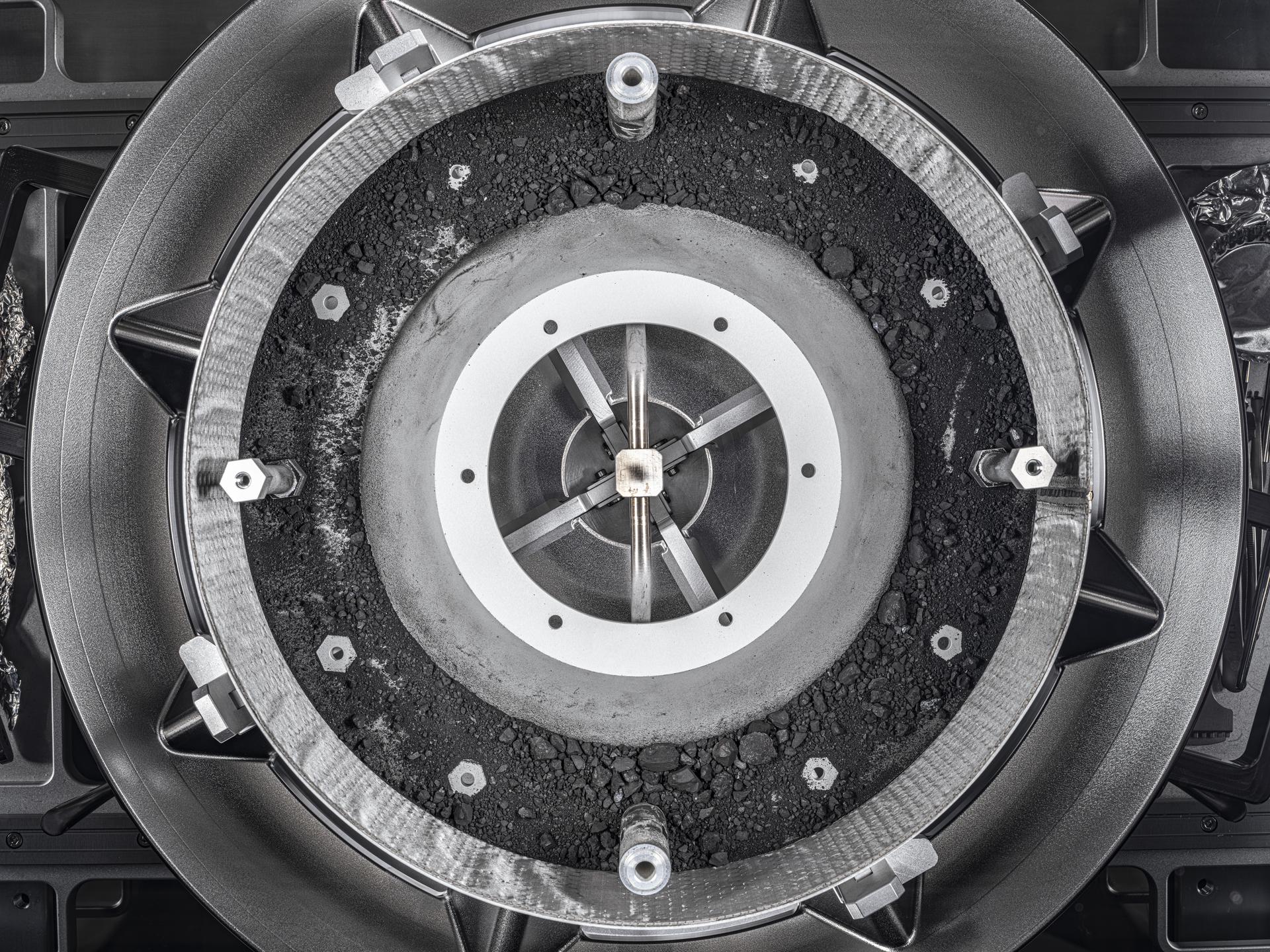The NASA OSIRIS-Rex mission leaved the Earth in 2017 and the last September 2023 it returned with a surprising loot from the famous asteroid Bennu.
About Bennu
Bennu is a small, near-Earth asteroid that passes close to Earth about every six years. Bennu is an ancient relic of our solar system’s early days and it has seen more than 4.5 billion years of history. Scientists think that within 10 million years of our solar system’s formation, Bennu’s present-day composition was already established. Bennu likely broke off from a much larger carbon-rich asteroid about 700 million to 2 billion years ago. It likely formed in the main asteroid belt between Mars and Jupiter and has drifted much closer to Earth since then.
Bennu is a near-Earth asteroid, so since its discovery in 1999, it aroused many concerns on the Earth. Is a collision with our planet possible? Scientists think that in the future this possibility could be real. Recent calculations suppose that the most likely collision could be in 2182 (probability around 0,037%).
But instead of worry about the future, scientists take advantage of the composition of Bennu.
This is the motivation of the NASA OSIRIS-Rex mission.



The NASA OSIRIS-Rex mission brought back materials probably from a past ocean
The mission brought back around 121 grams of material. With only this handful of fragments the first investigations returned important results. Because its materials are so old, Bennu may contain organic molecules similar to those that could have been involved with the start of life on Earth.
Preliminary data, not yet published, would confirm the presence of phosphate compounds. Phosphate-containing rocks are usually formed on Earth in the sediments of the seabed due to aqueous alteration: the presence of rocks of this particular type of mineral could therefore indicate a past in which liquid water was present in contact with the material that constitutes the asteroid Bennu.
Initial analyzes showed that the samples brought back to Earth are rich in water. In particular, water is contained in the matrix of hydrated silicates present in the samples.
The isotopic analyzes have highlighted that the relationship between common water and heavy water, where a hydrogen atom is replaced with a deuterium atom, corresponds with that measured in the Earth’s oceans. This could be the proof that the water on planet Earth comes from asteroids. In fact, the Earth was formed in an arid environment, where water could not be present. Only after the first 500 million years, our planet underwent a major bombardment by asteroids and comets.
So our water could be extraterrestrial water.
Furthermore, the analysis of samples from Bennu, with its large quantities of water and carbon, also could help to unveil the origins of life in the universe. It is known that despite the very low temperatures, in many cases close to absolute zero, chemical reactions can still take place which allow the formation of complex organic molecules.
The presence in asteroids of the molecular building blocks of life, will give us an increasingly detailed picture of the mechanisms of the chemistry, as well as why it was possible on this planet, and perhaps elsewhere too, life.
References:
www.media.inaf.it/tag/bennu/
www.lescienze.it/news/2024/02/28/news/acqua_asteroide_bennu-15242213/
science.nasa.gov/solar-system/asteroids/101955-bennu/





